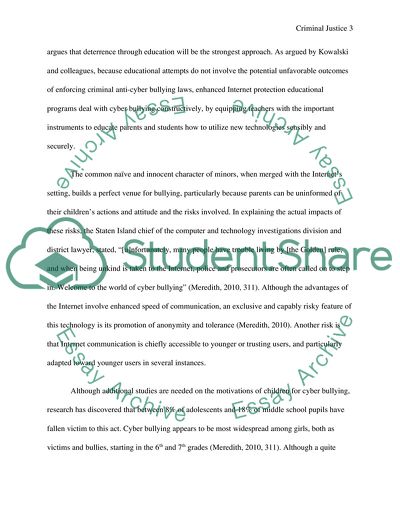Cite this document
(Cyber Bullying - Sealing a Tragic Faith Research Paper - 1, n.d.)
Cyber Bullying - Sealing a Tragic Faith Research Paper - 1. Retrieved from https://studentshare.org/law/1762096-cyber-bullying
Cyber Bullying - Sealing a Tragic Faith Research Paper - 1. Retrieved from https://studentshare.org/law/1762096-cyber-bullying
(Cyber Bullying - Sealing a Tragic Faith Research Paper - 1)
Cyber Bullying - Sealing a Tragic Faith Research Paper - 1. https://studentshare.org/law/1762096-cyber-bullying.
Cyber Bullying - Sealing a Tragic Faith Research Paper - 1. https://studentshare.org/law/1762096-cyber-bullying.
“Cyber Bullying - Sealing a Tragic Faith Research Paper - 1”, n.d. https://studentshare.org/law/1762096-cyber-bullying.


